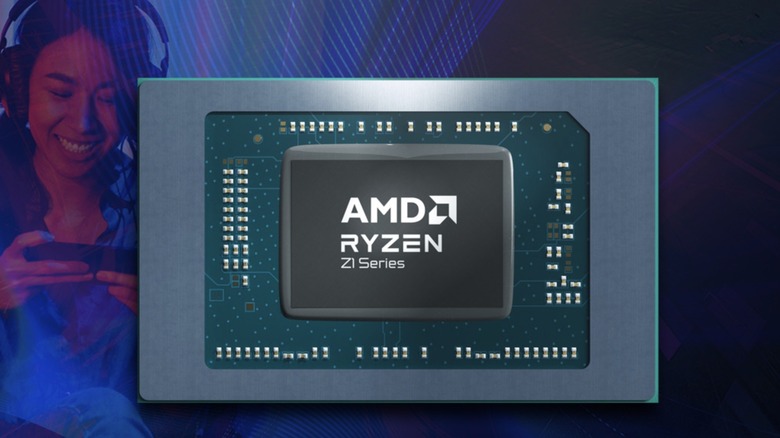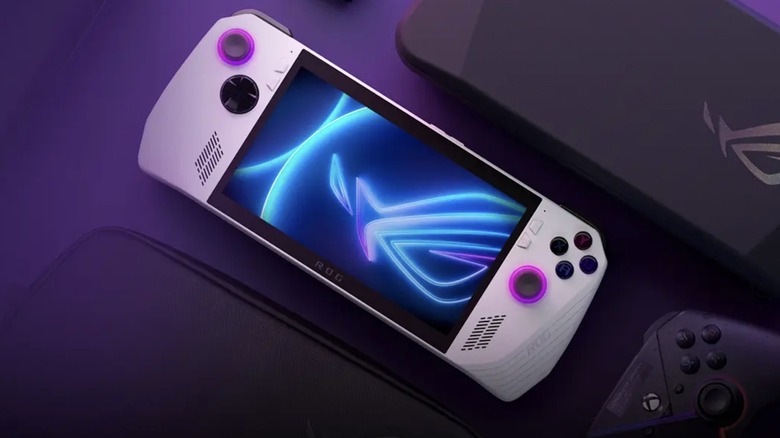AMD's New Ryzen Z1 Processors Are Destined For Handheld PC Gaming Devices
Earlier this month, ASUS unveiled its fascinating new foray into the world of handheld PC gaming consoles with the upcoming ROG Ally. The Ally is an interesting product that looks like a SteamDeck competitor, but runs Windows. Back then, it was presumed that this device would be powered by a 4nm AMD chip based on ZEN4 and RDNA3 architecture. On April 25, AMD officially revealed the family of chips that power the ROG Ally as the AMD Ryzen Z1 and the Ryzen Z1 Extreme.
The major highlight of these new chips is the fact that they are intended to be used on compact handheld systems — a rather uncommon form factor for X-86 chips. Given that these new chips natively support Windows 11, they will be compatible with the full array of Windows 11 apps, games, and even productivity software.
With an Xbox Game Pass subscription, users can access the vast library of PC games. AMD also claims that both the Ryzen Z1 chips feature advanced power management technologies that promise "great" battery life.
The Asus ROG Ally will be the first device to feature AMD Ryzen Z1 processors, and the product is likely to be officially launched on May 11, 2023, when the company is expected to reveal more pricing and availability details.
AMD Ryzen Z1: Everything you need to know
The key differences between the AMD Ryzen Z1 Extreme and its vanilla cousin — the Ryzen Z1 — are the number of supported cores and the graphics hardware. While the Extreme version supports eight cores and 16 threads, the Ryzen Z1 has a lower 6-core CPU that supports 12 threads. In terms of graphics, the Extreme variant of the AMD Z1 features 12 AMD RDNA3 compute units — compared to just four compute units on the vanilla variant.
These powerful hardware specs ensure that the Ryzen Z1 Extreme offers 8.6 teraflops of graphics performance, thereby putting it in the league of the Sony PS5 (which claims 10.26 teraflops), and far higher than the 1.6 teraflops claim of the Steam Deck.
However, initial indications are that the only device powered by the Z1 chip will need to draw 30 watts of power to deliver this kind of performance. This would more than double the 15W power draw claimed by the Steam Deck, and will undoubtedly have implications on the battery life.
It would be interesting to see how well these chips perform while drawing a relatively sane 15W of power, though that'll have to wait until ASUS launches the ROG Ally and the first reviews of the device are out. Nevertheless, now is an exciting time for anyone interested in handheld gaming consoles, given that Sony is also reportedly considering making a PlayStation handheld as well.

